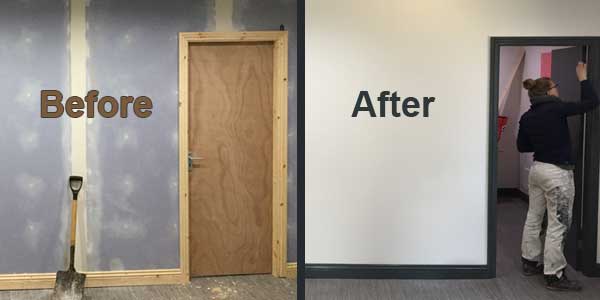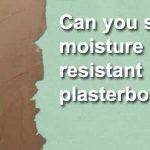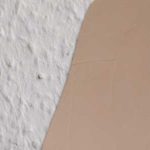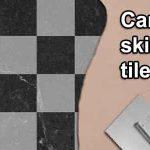From renovating old walls, to replacing existing surfaces, you have several options available when updating the walls in a property.
In most modern properties you will use plasterboard. Once this is installed and some additional 2nd fix work is carried out you will be considering how to decorate and finish the walls off. One of the most popular ways to do this, is by painting.
One common question is whether you will need to skim the plasterboards before you paint. Perhaps you’re wondering whether you can paint directly onto your boards. Also, is there any prep involved? Let’s look at whether you need to skim plasterboard before painting and help you to take the next step.
The good news is you don’t always need to skim plasterboard before painting. Whether you choose to skim before painting is down to personal choice. If you want to save money and time, then opting to dry line your walls is an alternative option.
Dry lining will enable you to create a smooth and neat finish, making it possible to paint directly onto the plasterboard. There is some additional prep work required, but once you have completed it, you will then be ready to paint.
The Advantage of Using Tapered Edge Boards

If you have chosen to paint directly onto plasterboard, you will need to use the right materials. This means you will need to use tapered edge boards. As the name suggests, the edges of these boards are tapered. This means where they meet there is a depression. You will then fill this area with joint filler and tape enabling you to hide the joint.
The reason for using tapered edge boards is the joints are easier to fill when compared with standard boards. If you were to use standard boards, the joints would likely be visible once the walls are painted, even if you fill them.
The tapered boards allow you to create a suitable finish which ensures that the walls are ready for painting. This can help you to save time, effort and money when compared with hiring a plasterer to skim your walls.
What Prep is There When Using Tapered Edge Boards?
As you won’t be using plaster to finish your walls, it is important that you carry out the right prep when using tapered edge boards. These boards do make it possible to paint without plastering. However, you will still need to complete the necessary prep to achieve a perfect finish.
The prep you will need to carry out will include:
- Using scrim tape – This will the stuck across the entire length of each joint.
- Skim the joint – You can then fill the joint using joint filler and a plastering trowel (or float). By skimming up and down the vertical joint, you can achieve a seamless finish in one movement
- Filling screw holes and any gaps – Next you can also begin filling all screw holes and gaps around the wall to ceiling joints and internal corners. Any external corners will need an angle bead before filler is applied.
- Add a second coat to the joints – Once the filler is dry, you can then apply a second coat, which will need to sit proud of the surface (1-2mm will be perfect).
- With the second coat dry, you can then begin sanding all the filled areas down to achieve a smooth finish.
Once you have completed this prep work, you are then ready to begin painting your walls.
Do I Need to Prime Plasterboard Before Painting?
While you might be tempted to apply your paint directly onto your plasterboard, you should avoid this. Plasterboard is porous, which means unless you are using moisture restant boards, it quickly absorbs moisture. Therefore, you will need to carry out some simple initial prep work.
Before you apply any finishing coats of paint, you will need to apply a mist coat which will help to provide a perfect base coat for the finishing coats helping them bond well to the board.
You can create a mist coat by watering down matt emulsion paint. You should not use vinyl or silk paints as these create a layer on top of the boards. This will mean that your paint will not bond as well, which can lead to poor adhesion and subsequent flaking or peeling.
A mist coat is extremely easy to make and is mixed using a ratio of 4 parts paint and 1 part water. In many cases, one mist coat is usually enough, and you apply it with a roller but you can apply a second coat if you feel the need. Once the mist coats are dry, you can then begin to apply your chosen paint and colour.
Conclusion
So, there you have it, you don’t always need to skim plasterboard before painting. If you do decide to opt for drylining, remember, it is an easier option than skimming the walls, but it is still vital that you carry out all the prep work correctly. This will ensure you have perfect walls that are ready for painting.
Once you are ready to paint, ensure you apply a mist coat first and then you are ready to apply your paint and deliver a finish that looks as good as they would if your walls were professionally skimmed.




